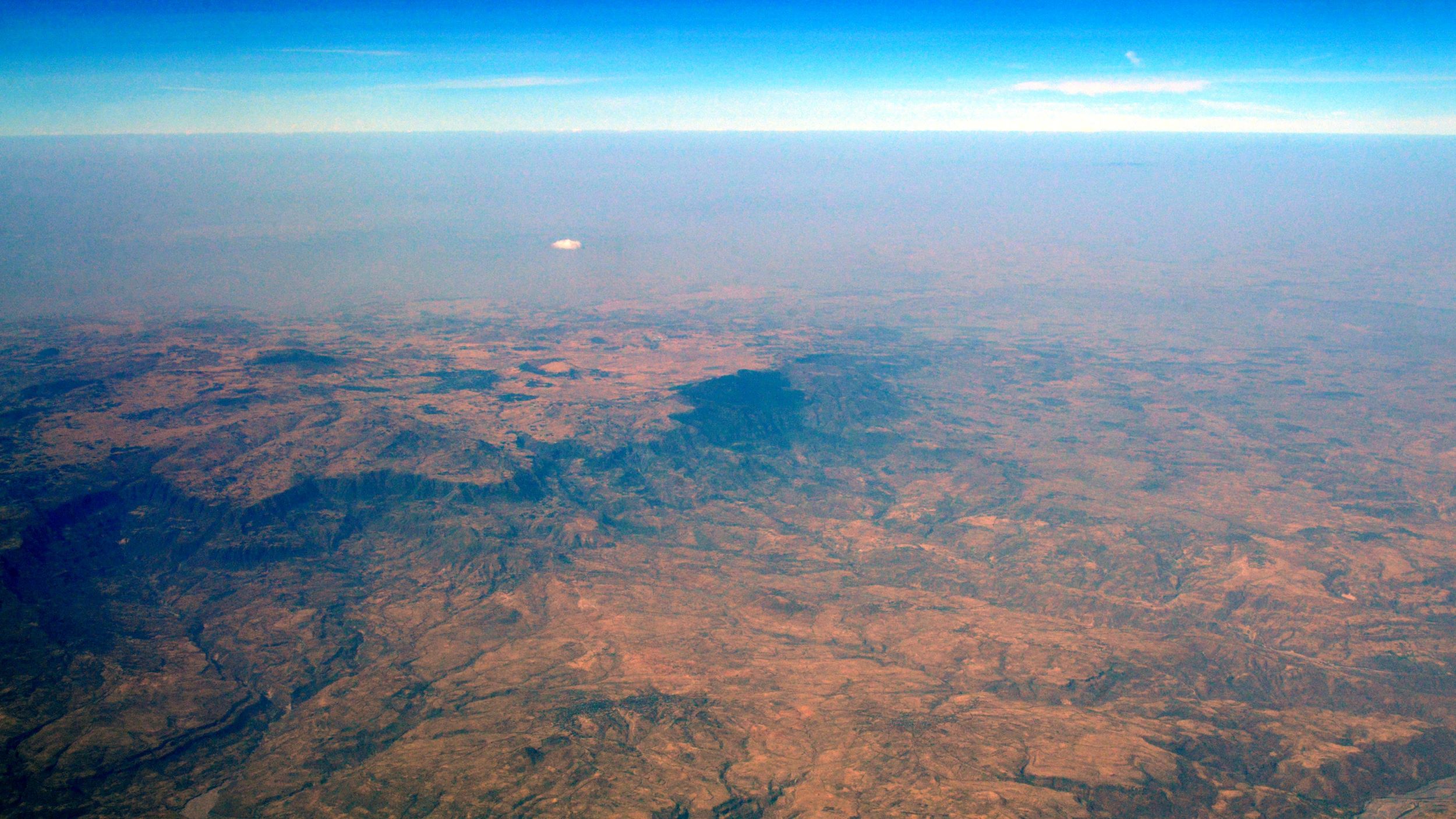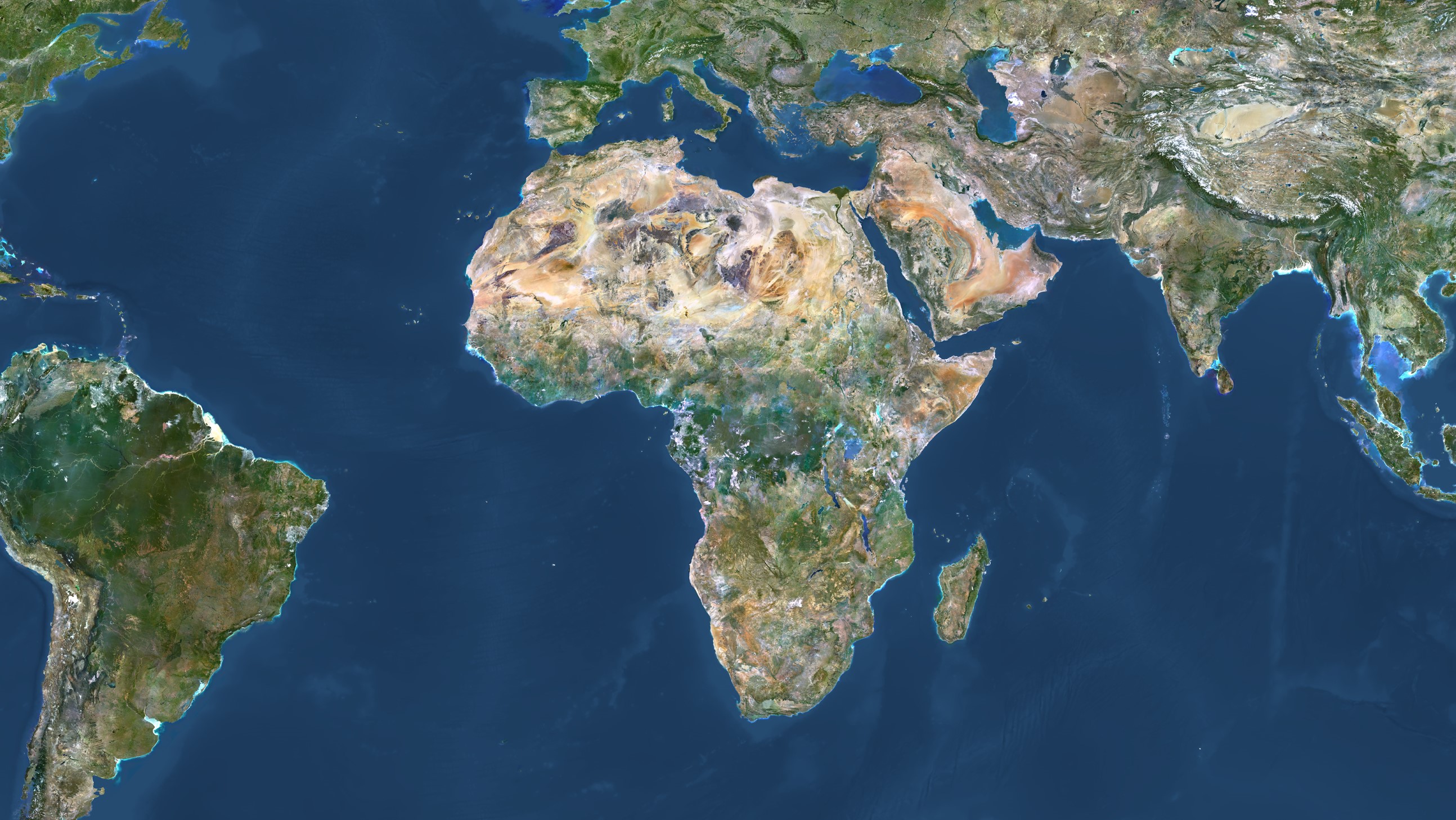Mushroom-shaped superplume of scorching hot rock may be splitting Africa in 2
Strange, never-before-seen movements in the East Africa Rift Valley appear to be driven by super-heated rock from deep beneath Earth's surface.
A giant plume of super-heated rock rising up from near Earth's core could help explain mysterious distortions linked with a giant tear in the planet's surface that appears to be splitting Africa in two, a recent study finds.
Across the planet, huge gashes in Earth's surface known as continental rifts are ripping landmasses apart. The largest active continental rift is the East African Rift, a network of valleys that is about 2,175 miles (3,500 kilometers) long, stretching from the Red Sea to Mozambique.
Continental rifting is driven by the deformation of the lithosphere, the planet's outermost rigid layer. As the lithosphere stretches thin, its shallowest parts can distort in a variety of ways, from pulling apart like dough to shattering.
Study co-author D. Sarah Stamps, a geophysicist at Virginia Tech in Blacksburg, likens these responses to Silly Putty — if you hit Silly Putty with a hammer, it can crack and break, but if you slowly pull it apart, it stretches. Over different time scales, Earth's lithosphere can also behave in different ways.
The direction in which Earth's surface deforms at continental rifts is usually at right angles to the length of a rift — imagine two halves of a continent pulling apart, with land stretching or breaking where those halves meet.
Related: Scientists extract a kilometer of rock from Earth's mantle in record-breaking mission
After examining the East African Rift for more than 12 years, the researchers found that deformation is perpendicular — as expected — moving east and west. However, they also discovered deformation parallel to the rift, moving north. These surface motions "are quite unusual and have not been observed elsewhere," Stamps told Live Science.
Get the world’s most fascinating discoveries delivered straight to your inbox.
In the study, the team found that a giant, mushroom-shaped "superplume" of scorching-hot, buoyant rock ascending up Earth's mantle may help explain these mysterious distortions.
"This work suggests plumes may play an active role in deforming the Earth’s surface, particularly in continental rifts where the lithosphere has thinned," Stamps said.
Scientists have long known of mantle plumes on Earth. For example, Iceland and the island chains of Hawaii and the Galapagos formed as tectonic plates slowly drifted over mantle plumes, which seared overlying material like a blowtorch.
The researchers focused on the African Superplume, which rises beneath southwest Africa and goes northeast across the continent, becoming shallower as it extends northward.
The scientists used GPS technology to monitor surface motions at the East African Rift with millimeter precision. They also used seismic instruments to analyze the directions in which mantle rock slowly flowed over a broad area.
Finally, 3D computer simulations developed by study lead author Tahiry Rajaonarison, a geophysicist at New Mexico Tech in Socorro, analyzed the GPS and seismic data to work out the underground activity underlying the East African Rift.
The 3D models showed that the unusual deformations parallel to the rift may be driven by northward mantle flow associated with the African Superplume.
"Imagine a stronger Silly Putty on top of a weaker Silly Putty, which represent the highly viscous lithosphere and the less viscous plume material, respectively," Rajaonarison told Live Science. "If you move the weaker Silly Putty, it will progressively stick together with the stronger Silly Putty at their interface until the stronger Silly Putty moves in the same direction."
All in all, "for me the most important implication of these findings is the improvement of our understanding of how continents breakup," Rajaonarison said.
The scientists published their findings March 27 in the Journal of Geophysical Research: Solid Earth.





